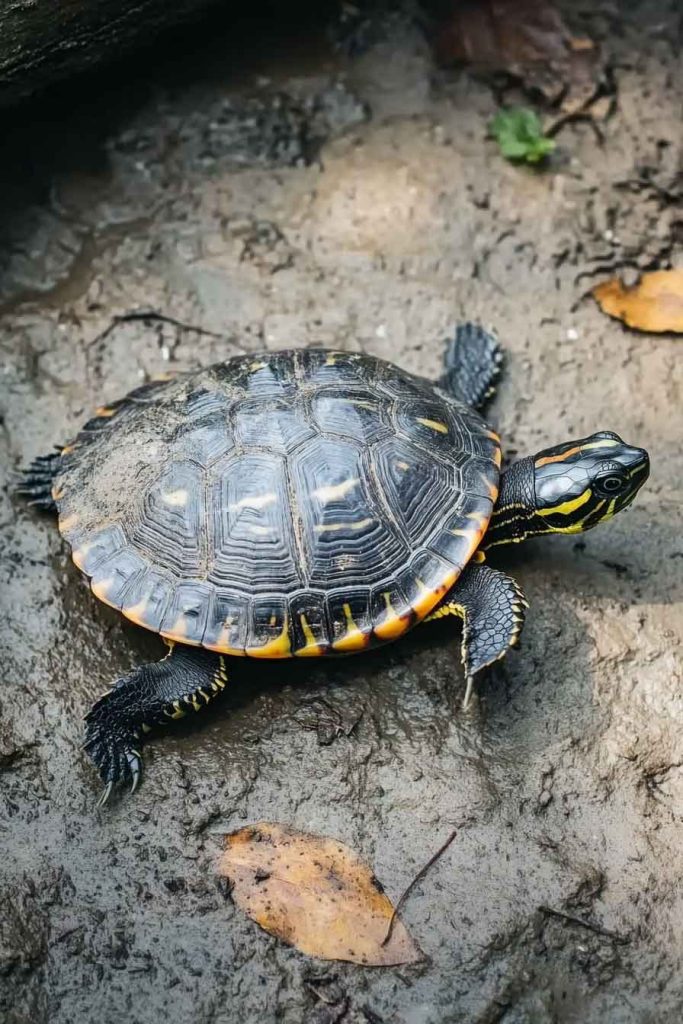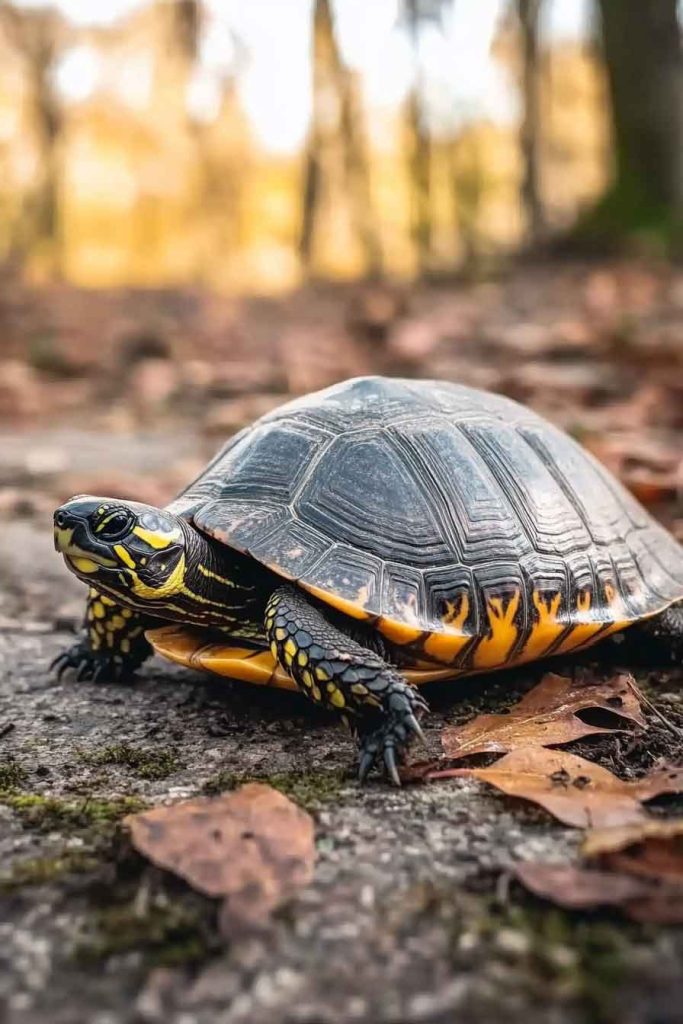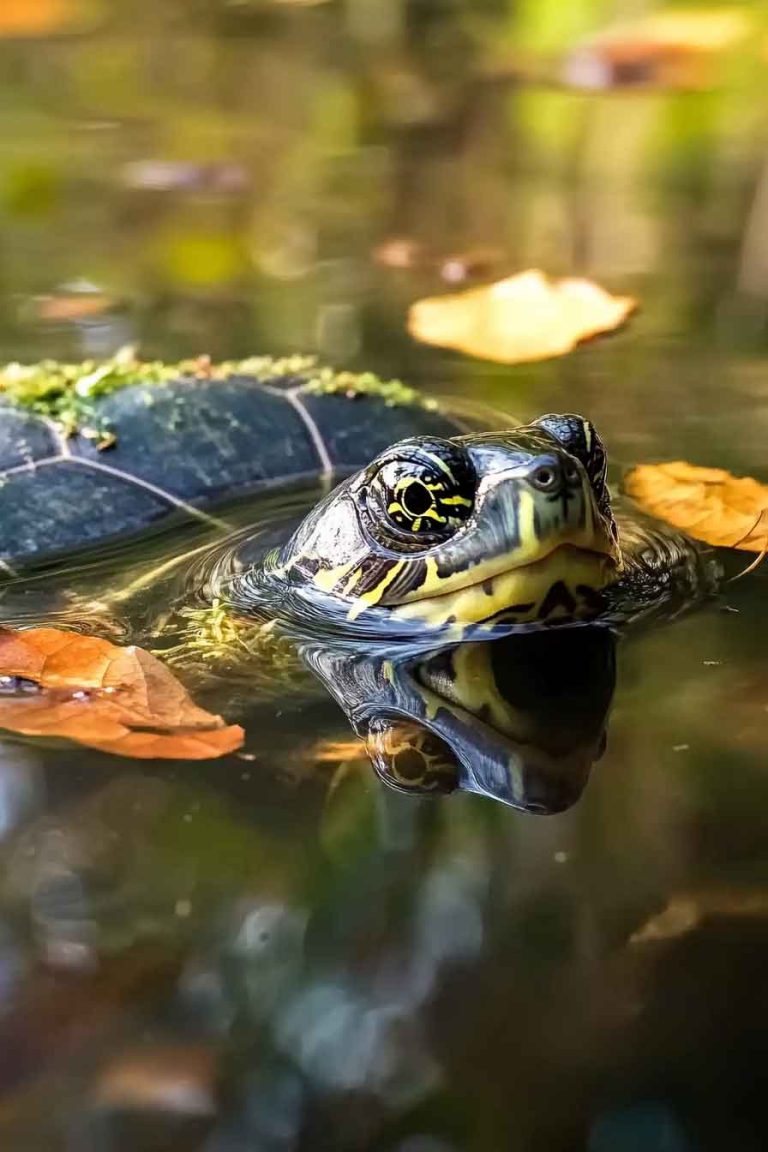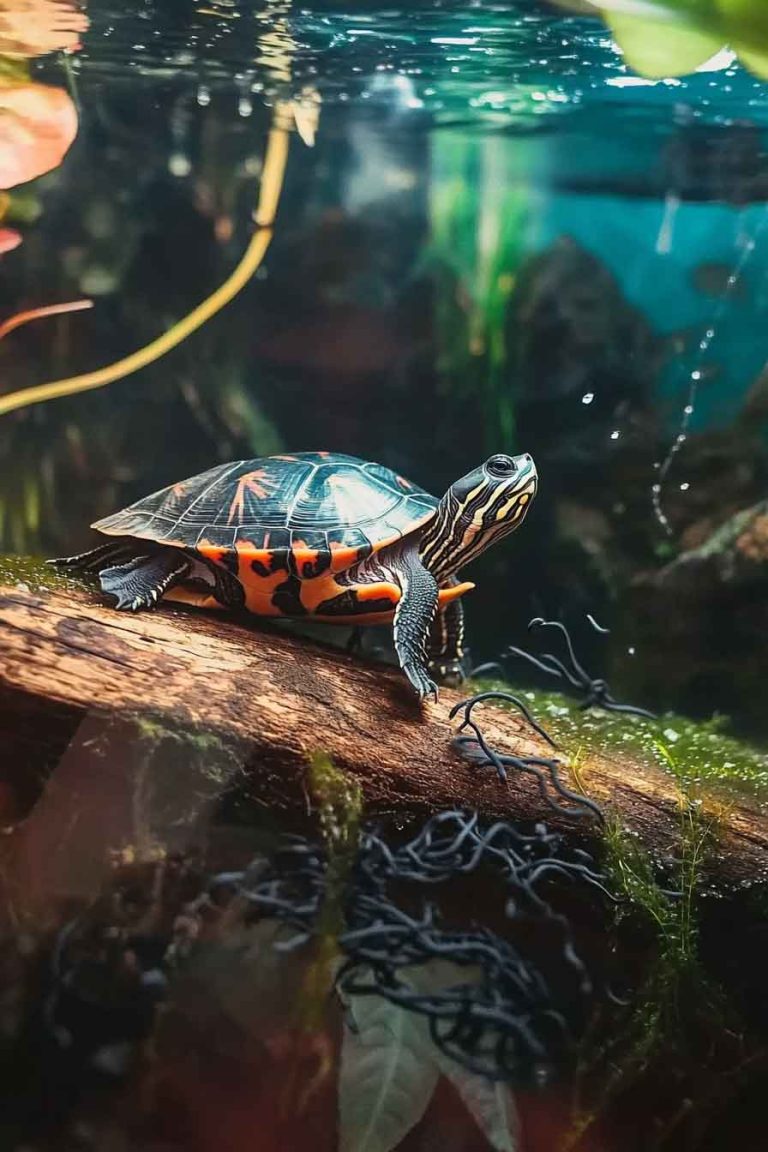Why Is My Turtle’s Shell Fading? Causes, Solutions, and Care Tips
Have you looked at your turtle lately and noticed something strange? Maybe their shell doesn’t look as bright as it used to. Maybe the colors seem washed out or pale. I know how worried you must feel right now. When I first saw my turtle’s shell fading, I got really scared too. Don’t worry –…
Have you looked at your turtle lately and noticed something strange? Maybe their shell doesn’t look as bright as it used to. Maybe the colors seem washed out or pale. I know how worried you must feel right now. When I first saw my turtle’s shell fading, I got really scared too.
Don’t worry – I’m here to help you understand what’s happening with your turtle friend. In this guide, I’ll walk you through everything you need to know about turtle shell fading. We’ll talk about why it happens, how to tell if it’s serious, and most importantly, what you can do to help your turtle.
Why Is My Turtle Shell Color Fading?
Let me be honest with you – when your turtle’s shell starts fading, it’s usually not normal. Something is probably wrong, and your turtle needs your help. The shell might look pale, washed out, or just not as vibrant as before. This is your turtle’s way of telling you they need something.
I’ve learned that shell fading usually happens when we don’t take care of our turtles the right way. But here’s the good news – most of the time, we can fix it! Let me tell you about all the reasons why your turtle’s shell might be fading.
Main Reasons Your Turtle Shell Is Fading
Not Enough UV Light
This is one of the biggest reasons I see turtle shells fade. Your turtle needs UV light – especially UVB rays – to stay healthy. Without it, their body can’t absorb calcium properly. And when they can’t get enough calcium, their shell starts to fade and lose color.
Think about it this way – turtles in nature get lots of sunlight every single day. They bask in the sun for hours. But our pet turtles live inside, so we need to give them UV light another way.
Here’s what I want you to do:
Get a good UVB light bulb. Put it near your turtle’s tank where they can bask under it. Make sure the bulb is close enough to work but not too close to burn them. I usually keep mine about 6 to 12 inches away from the basking spot.
Change your UV bulbs regularly. This is super important! Many turtle owners don’t know this, but UV bulbs lose their power over time. Even if the light still turns on, it might not be making UVB rays anymore. I change my bulbs every 6 months to be safe. Some people wait up to a year, but I don’t want to risk it.
Take your turtle outside sometimes. If you can, let your turtle spend some time in real sunlight. I know this sounds simple, but natural sunlight is so much better than any bulb you can buy. Even the most expensive UV light can’t match the real sun. Just make sure your turtle is safe – watch them the whole time and don’t let them get too hot or escape.

Poor Diet and Nutrition
I can’t stress this enough – what you feed your turtle matters so much! If your turtle isn’t getting the right foods, their shell will show it. They need vitamins and minerals to keep their shell strong and colorful.
A lot of turtle owners just give their pets pellets and nothing else. That’s not enough! Your turtle needs variety in their diet, just like you do.
Here’s what I feed my turtles:
Commercial turtle pellets – These are good as a base, but they shouldn’t be the only thing you give.
Fresh vegetables – I give my turtles leafy greens like kale, collard greens, and dandelion greens. They also love carrots and squash.
Fruits as treats – Turtles enjoy fruits, but don’t give too much because of the sugar. I give small pieces of strawberries, melons, or berries once or twice a week.
Protein foods – This is really important! Give your turtle crickets, mealworms, earthworms, or small fish. These help keep their shell healthy and colorful.
When I improved my turtle’s diet, I saw their shell get brighter in just a few weeks. It really works!
Not Enough Protein
Let me talk more about protein because it’s so important. If your turtle doesn’t get enough protein, their shell can turn pale and washed out. This is especially true for baby turtles – they need lots of protein to grow properly.
Baby turtles should eat more protein than adult turtles. I give my baby turtles protein foods almost every day. For adult turtles, I give protein about 3-4 times per week.
Good protein sources include:
- Earthworms
- Crickets
- Mealworms
- Small fish
- Shrimp
Mix these with your turtle’s regular food. Your turtle will love the variety, and their shell will thank you!
Hard Water Problems
This one surprised me when I first learned about it. The water in your turtle’s tank might be causing the fading! If you have hard water (water with lots of minerals), those minerals can stick to your turtle’s shell.
The main minerals in hard water are calcium and magnesium. When your turtle basks and the water dries on their shell, these minerals are left behind. Over time, this creates a white, chalky coating that makes the shell look faded or discolored.
The good news is that hard water doesn’t hurt your turtle’s health. It just makes them look bad. But I understand – you want your turtle to look their best!
Here’s how to fix hard water problems:
Use a water filter. I installed a good filter in my turtle tank, and it helps reduce the minerals in the water.
Use a water conditioner. When you change the water, add a conditioner that reduces calcium and magnesium levels.
Wipe your turtle’s shell. When you see the white coating, gently wipe it off with a soft, wet cloth. You can also use a soft toothbrush to brush it away gently. Be very careful and gentle!
Change the water regularly. Fresh, clean water helps prevent mineral buildup. I change 25-30% of my turtle’s water every week.
One important thing – don’t confuse mineral deposits with fungal infections! Mineral deposits from hard water feel hard and chalky. They don’t smell bad. Fungal infections feel soft and mushy, and they often smell terrible. If you’re not sure which one you have, ask your vet.
Shell Rot
Now we’re getting into the serious stuff. Shell rot is an infection in your turtle’s shell, and it’s really dangerous. If your turtle has shell rot, you need to act fast!
Shell rot happens when bacteria or fungi attack your turtle’s shell. It usually starts because of dirty water, injuries to the shell, or a weak immune system.
Signs of shell rot include:
- Soft spots on the shell
- Bad smell coming from the shell
- Pus or liquid oozing from the shell
- Black, gray, or white spots that look rotten
- Pieces of shell falling off
If you see any of these signs, take your turtle to the vet right away! Shell rot can kill your turtle if you don’t treat it quickly. Your vet will clean the infected area and give you medicine to help your turtle heal.
Fungal Infections
Fungal infections are another serious problem that can make your turtle’s shell fade. These infections show up as white, gray, or sometimes black spots on the shell. The spots might look fuzzy or have a strange texture.
Fungal infections usually happen because of:
- Dirty water in the tank
- Not enough basking time
- Not enough UV light
- Weak immune system from poor diet
Aquatic turtles get fungal infections more often than land turtles because they’re in water all the time. The fungus loves warm, wet environments.
If your turtle has a fungal infection, you’ll also notice:
- Skin peeling off
- Soft patches on the shell
- Your turtle acting sick or not eating
- Strange white or gray fuzzy growth
Take your turtle to the vet if you think they have a fungal infection. The vet will give you special medicine to kill the fungus. You’ll also need to clean your turtle’s tank really well and make sure they get plenty of basking time under the UV light.
Is It Normal For Turtle Shells To Change Color?
Yes! Let me tell you something that might make you feel better. Turtle shells do change color naturally as turtles grow up. This is totally normal and healthy.
When turtles are babies, they usually have really bright colors. Baby turtles often have bright green, yellow, or orange shells. But as they get older, their shells turn darker. This happens to almost every type of turtle.
For example, baby red-eared slider turtles have beautiful bright green shells. But when they become adults, their shells turn dark green, brown, or even black. This is completely normal!
Here are the natural reasons turtle shells change color:

Growing Up
As your turtle gets bigger, their shell develops darker shades. This is just part of growing up for turtles. The bright baby colors fade away, and adult colors appear. Every turtle species does this in some way.
Think of it like how human babies have different features than adult humans. It’s natural growth!
Shedding Scutes
Turtles shed the outer layer of their shell as they grow. These outer pieces are called scutes. When a turtle sheds, the new layer underneath looks really bright and colorful at first. But as it gets exposed to light and air, it slowly gets darker and matches the rest of the shell.
Shedding is healthy and normal. It actually helps prevent fungal infections and keeps the shell strong. So if you see your turtle shedding, don’t worry – it’s a good thing!
Where They Live
The environment can change how bright or dark a turtle’s shell looks. I’ve noticed that turtles living in tanks indoors often have paler shells than turtles that get lots of natural sunlight. This is because sunlight helps produce vitamin D, which keeps the shell healthy and colorful.
Turtles that bask in real sunlight every day usually have the brightest, most vibrant shells. This is another reason why I try to give my turtles outdoor time when the weather is nice.
Attracting Mates
This is interesting – in some turtle species, bright colors help male turtles attract female turtles. The brighter and more colorful a male turtle is, the more attractive he is to females. So some color changes are actually about finding a partner!
How To Tell If Shell Color Change Is Healthy Or Unhealthy
I know you’re probably wondering – how do I know if my turtle’s color change is normal or if something is wrong? Let me help you figure this out.
Signs Of Healthy Color Change
A healthy color change looks like this:
- The color changes evenly across the whole shell
- The shell still looks smooth and hard
- Your turtle acts normal – eating well, swimming, basking
- The colors might get darker but they look natural
- No spots, patches, or weird textures
- No bad smells coming from the shell
- The shell feels firm when you gently touch it
If your turtle’s shell is changing like this, and your turtle seems happy and healthy, you probably don’t need to worry. This is just your turtle growing up!
Signs Of Unhealthy Color Change
An unhealthy color change looks different:
- Patchy or uneven coloring
- White, gray, or black spots that don’t match the rest
- The shell looks bleached out or very pale
- Soft spots on the shell
- Bad smell
- Fuzzy or scaly texture
- Your turtle stops eating or acting normal
- The markings or stripes fade away completely
If you see any of these signs, something is wrong. Your turtle needs help!
What To Do When Your Turtle Shell Is Fading
Okay, so you’ve figured out that your turtle’s shell fading isn’t normal. What do you do now? I’m going to give you a complete action plan.
Step 1: Check Your UV Light Setup
First, look at your UV light. Is it working? Is it close enough to your turtle? When was the last time you changed the bulb?
Action items:
- Buy a new UVB bulb if yours is more than 6 months old
- Make sure the light is 6-12 inches from the basking spot
- Check that your turtle can easily reach the basking area
- Let the UV light stay on for 10-12 hours every day
- If possible, take your turtle outside in natural sunlight a few times per week
Step 2: Improve The Diet
Look at what you’re feeding your turtle. Is it varied and nutritious? Here’s what I want you to do:
Create a feeding schedule:
- Daily: High-quality turtle pellets
- 3-4 times per week: Protein foods (worms, crickets, small fish)
- Daily or every other day: Fresh vegetables
- 1-2 times per week: Fruits as treats
Add supplements:
- Get calcium powder and sprinkle it on food 2-3 times per week
- Consider a turtle vitamin supplement once a week
Make sure you’re not overfeeding! Give your turtle only as much food as they can eat in about 15-20 minutes.
Step 3: Fix Water Quality
Check your water! Is it clean? Is it hard water? Here’s my water care routine:
Weekly tasks:
- Change 25-30% of the water
- Clean the filter
- Test the water with a water test kit
- Remove any uneaten food
Monthly tasks:
- Do a deeper clean of the tank
- Replace filter media
- Check the filter and heater to make sure they work
For hard water:
- Install or upgrade your water filter
- Use water conditioner when you change water
- Gently wipe mineral deposits off your turtle’s shell
Step 4: Monitor Your Turtle
Watch your turtle closely for the next few weeks. Look for:
- Is their behavior normal?
- Are they eating well?
- Do they bask regularly?
- Does the shell look better or worse?
Keep notes! Write down what you see each day. This will help you notice patterns and improvements.
Step 5: See A Vet If Needed
If you’ve done everything above and your turtle’s shell still looks bad, or if you see signs of shell rot or fungal infection, go to the vet! Don’t wait. These problems can kill your turtle if not treated quickly.
Also see a vet if:
- Your turtle stops eating
- The shell has soft spots
- There’s a bad smell
- You see pus or fluid
- Your turtle acts very sick
Preventing Future Shell Fading
Once you fix the fading problem, you want to make sure it doesn’t happen again. Here’s how I keep my turtles’ shells healthy and colorful:
Daily Care
Every single day, I:
- Turn on the UV light in the morning
- Feed my turtles a good meal
- Watch them to make sure they’re acting normal
- Make sure they have a clean basking area
Weekly Care
Once a week, I:
- Change part of the water
- Clean visible dirt from the tank
- Give my turtles extra protein foods
- Let them spend time outside if weather permits
- Gently wipe their shells if I see any mineral buildup
Monthly Care
Once a month, I:
- Do a deep clean of the entire tank
- Check all equipment
- Review my feeding routine to make sure it’s still good
- Take my turtles to bask in natural sunlight for an extended period
Every 6 Months
Twice a year, I:
- Replace UV bulbs
- Take my turtles for a vet checkup
- Evaluate their diet and make changes if needed
Special Tips For Baby Turtles
If your baby turtle’s shell is fading, I want you to pay extra attention. Baby turtles need special care because they’re still growing.
Baby turtles need:
- More protein than adults (feed protein daily)
- Strong UV light for proper growth
- Extra calcium supplements
- Clean water changed more frequently
- Smaller food pieces they can actually eat
Baby turtle shells should be deep and dark in color. If your baby turtle’s shell looks pale or faded, something is definitely wrong. Don’t ignore it!
Frequently Asked Questions
Can A Faded Shell Return To Normal?
Yes! In most cases, if you fix the problem causing the fading, your turtle’s shell will get brighter again. It might take a few weeks or even months, but I’ve seen many turtles recover their beautiful colors.
The key is to start treatment quickly and be consistent with care.
Is Shell Fading Painful For Turtles?
It depends on the cause. If the fading is from lack of nutrition or UV light, it’s probably not painful – just unhealthy. But if the fading comes from shell rot or infection, then yes, your turtle is probably in pain and needs help right away.
Should I Put Anything On My Turtle’s Shell?
Don’t put lotions, oils, or other products on your turtle’s shell unless your vet tells you to! Many turtle owners think they should moisturize the shell, but this can actually cause problems. It can trap bacteria and make infections worse.
The only time you should put something on the shell is if your vet prescribes medicine for shell rot or fungal infection.
How Long Does It Take To See Improvement?
If you fix the diet and UV light issues, you might see small improvements in 2-3 weeks. But full recovery of bright, healthy color can take 2-3 months or longer.
Be patient! Shell health takes time to improve. Keep up with good care, and your turtle will reward you with a beautiful shell.
My Final Thoughts
I know how scary it is to see your turtle’s shell fading. When it happened to my first turtle, I was so worried! But I want you to know that in most cases, you can fix this problem.
The most common causes – lack of UV light, poor diet, and hard water – are all things you can control. By making some simple changes to how you care for your turtle, you can help their shell become bright and colorful again.
Remember:
- Check your UV light and change bulbs regularly
- Feed a varied, nutritious diet with plenty of protein
- Keep the water clean and fresh
- Watch for signs of shell rot or fungal infection
- Take your turtle to the vet if you’re worried
Your turtle is counting on you to take care of them. By reading this guide and taking action, you’re already being a great turtle parent! I believe in you, and I know you can help your turtle friend.
If you ever feel confused or worried, don’t hesitate to call your vet. It’s always better to ask for help than to wait and let a small problem become a big one.
Take good care of your turtle, and they’ll reward you with years of companionship and a gorgeous, healthy shell that you can both be proud of!







